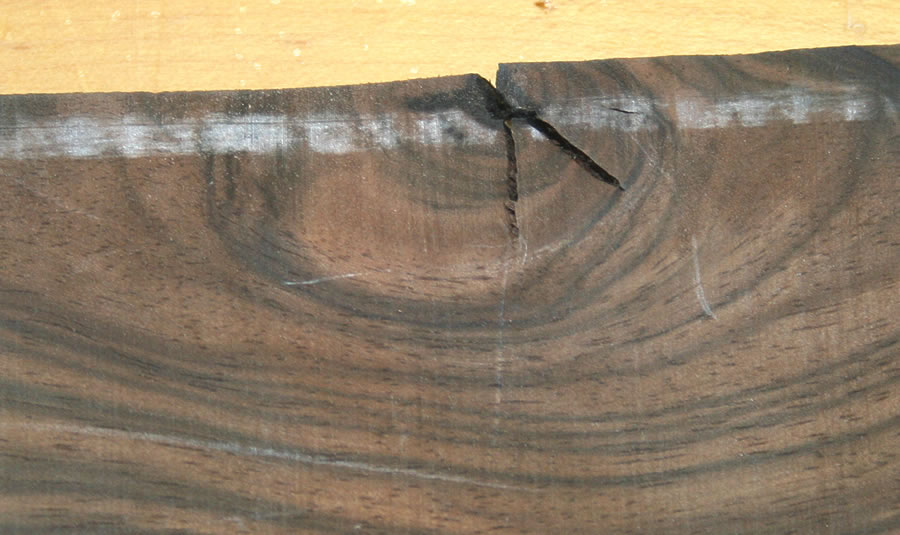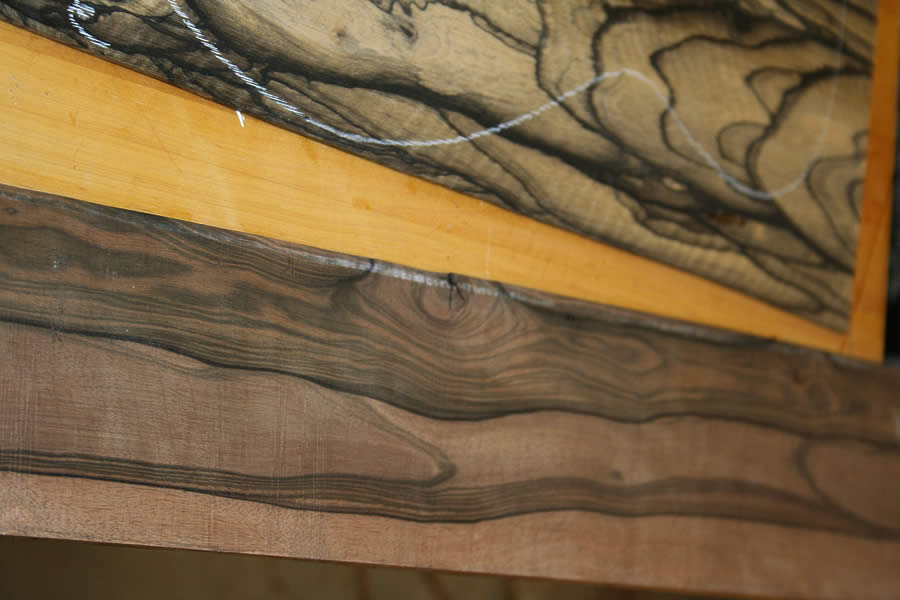I have a couple of sets of wood that are just outstanding, but they have a couple little flaws and I wanted to get some ideas about how you would attempt to fix these?
The first is a ABSOLUTELY killer set of black & white ebony that I got from Bob. This is just really over the top, but it has what appears to be a compression crack all the way through both plates on the back. It almost looks like it was struck with a sharp blow.
The crack is about 1" long. Outside of this damage the set is perfectly clean. It looks to me like this may have happened during shipping.
I have arranged this about every way I can, and no matter what I do this is going to end up in the pattern. So I have to fix it. But, my plan was to make this a show guitar, so the fix has to be invisible.
I am interested to get your opinions.
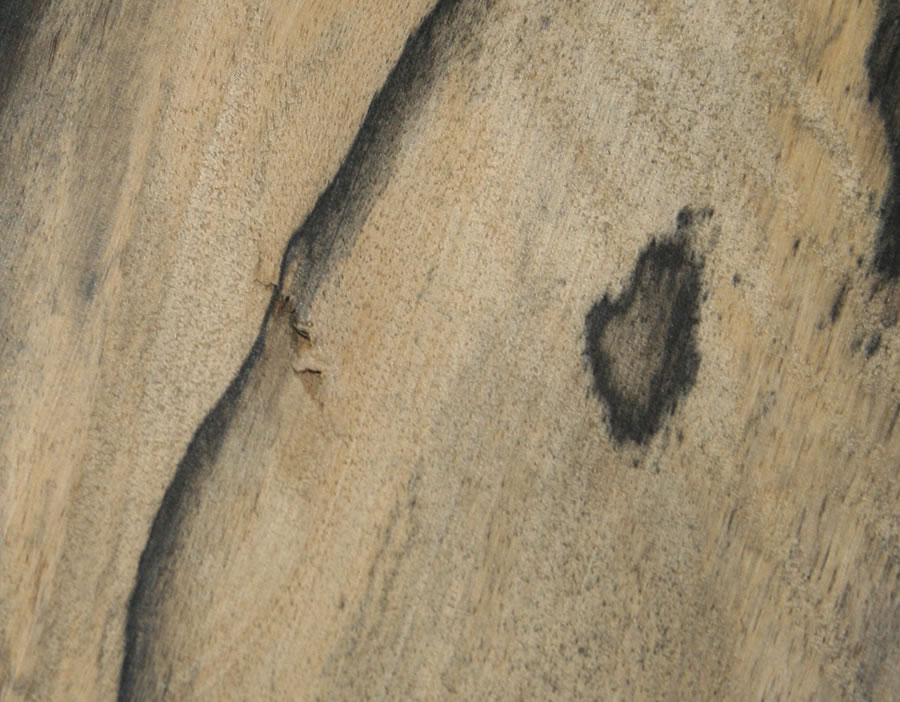
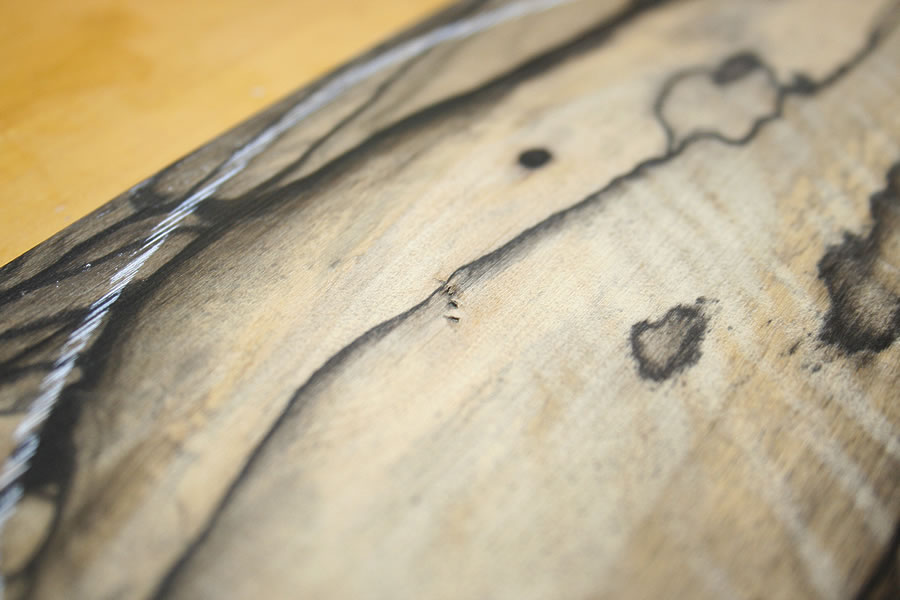
And just to give you a little context, this is the whole back.
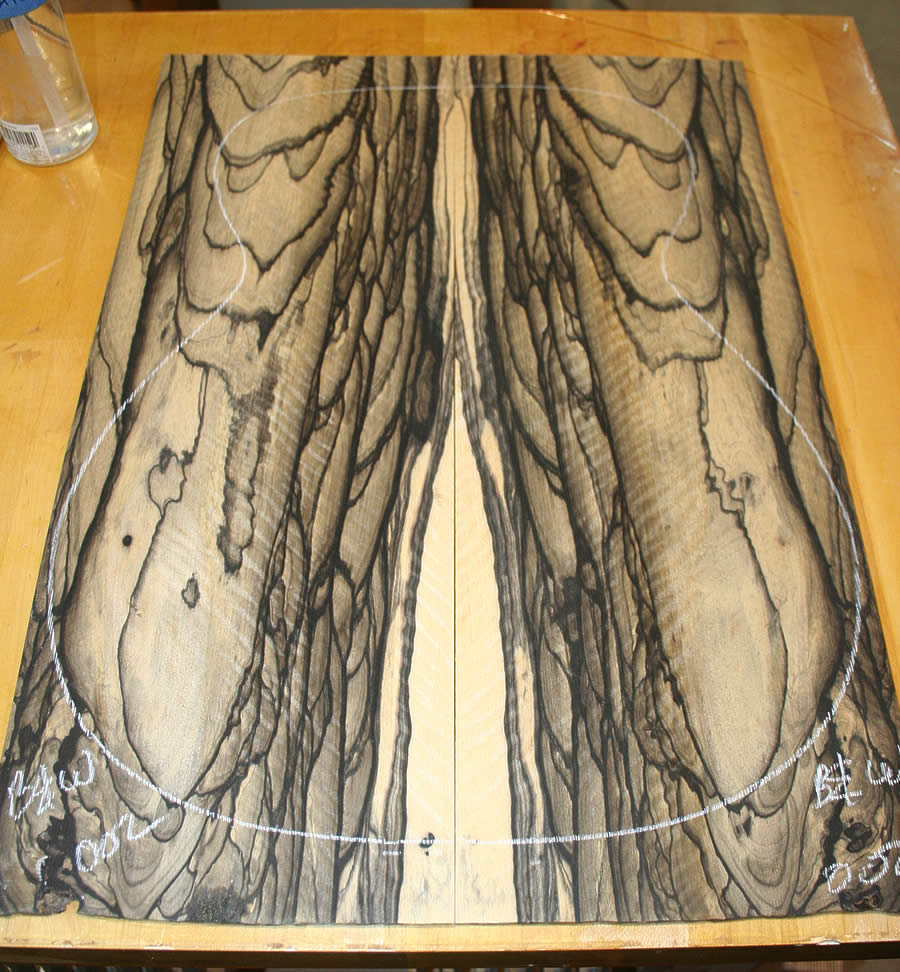
The second flaw is a split knot in a pair of macassar sides. The goal is to use this on a commission of a dread size guitar so I need to go clear to the edge.
Most of this will come out with the binding, and I am confident that I can seal this up with dust and epoxy... but given that it is right on the edge and I am unsure about what heat will do to this much glue. Would you attempt to fix this now (before thining and bending) or later (after thinning and bending.)
